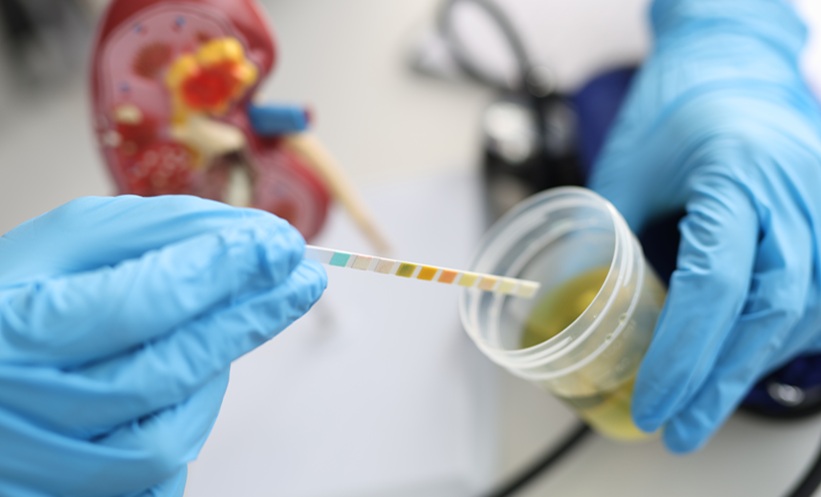Abstract
Surgical resection has long been considered the gold standard for the local treatment of primary and secondary liver tumours. Until recent years, percutaneous thermal ablation (PTA), in particular radiofrequency ablation (RFA), was not accepted as a first-line option for the treatment of liver tumours and was reserved for patients who were unsuitable for surgery. However, in the last decade the scenario has changed: interesting technical developments and innovations have improved the performance of RFA and broadened the availability of other ablative technologies, such as microwave ablation (MWA) and laser ablation (LA). The latest generation of MWA systems can achieve larger ablation areas than RFA and LA, with a multifibre technique that uses very thin needles, allowing physicians to treat nodules in at-risk locations with high flexibility and a very low risk ofcomplications. Nowadays, there is an increasingly accepted consensus on the role of PTA as a first-line option for the treatment of liver tumours <2 cm in size, as well as in patients potentially eligible for surgery, and it is likely that in the near future the 2 cm barrier could also be surpassed and extended to at least 3 cm. PTA is becoming more effective and important in the treatment of primary and secondary liver tumours, and, in the well-established scenario of a multimodal tailoredtreatment, it plays and will continue to play a central role. The aim of this paper is to examine the current role of PTA in such a scenario, focussing on advantages and limitations of the three available ablative techniques: RFA, MWA, and LA.
INTRODUCTION
Primary and secondary hepatic tumours are relatively common and significantly impact the overall survival (OS) of cancer patients. The incidence of hepatocellular carcinoma (HCC) is increasing worldwide; nowadays, HCC is the fifth most common cancer and the third most common cause of cancer-related mortality.1 Secondary involvement of the liver, particularly from colorectal carcinoma, is even more common.1,2 More than 50% of patients with gastrointestinal malignancies will develop liver metastases (LM), with significant morbidity and mortality.3,4
As a consequence, local treatments of liver tumours have gradually assumed a central role as part of multimodal cancer therapy. Liver transplantation represents the treatment of choice for selected patients with HCC, but it is only available to a restricted number of patients because of the high cost and shortage of donor livers.5 Surgical resection (SR) has widely been proven to improve OS in patients with either HCC or LM, particularly those with colorectal cancer liver metastases (CRLM), and for a long time it has been considered the gold standard for the local treatment of liver tumours.6-8 In the last two decades, percutaneous thermal ablation (PTA) has gained a key role in the treatment of patients who are not eligible for, poor candidates for, or refusing surgery, as well as being a bridge to liver transplantation.5 Although many studies have widely proven its effectiveness and safety, until very recently PTA was not accepted as a first-line option for the treatment of liver tumours and was reserved for patients unsuitable for surgery.5,9,10 However, compared with the first experiences, which were mostly based only on percutaneous ethanol injection and earlier devices for radiofrequency ablation (RFA), in the last decade the scenario has changed. Technical developments and innovations have improved the performance of RFA and broadened the availability of other ablative technologies, such as microwave ablation (MWA) and laser ablation (LA), allowing interventional radiologists and oncologists to offer an increasing number of tailored approaches for cancer patients, which have better outcomes. The aim of this narrative review is to examine the current role of PTA in the scenario of the multimodal tailored treatment of liver tumours, starting from the first and most widely used thermal ablation technique.
RADIOFREQUENCY ABLATION: STATE-OF-THE-ART IN THE TREATMENT OF HEPATOCELLULAR CARCINOMA AND LIVER METASTASES
RFA is the best established and most used technique worldwide, and its effectiveness and safety have largely been proven over the last two decades.5,9-12
Radiofrequency Ablation and Hepatocellular Carcinoma
Although the role of RFA as a bridge to liver transplantation has widely been established, its efficacy in the treatment of HCC with curative intent is still influenced by tumour location and size. RFA of tumours located close to large vessels can achieve suboptimal results due to the well-known ‘heat sink’ effect, which causes the partial shunt of thermal energy by the cooler blood.13 Likewise, the treatment of large lesions can require multiple overlapping ablations to obtain an adequate safety margin, and results in tumours >5 cm in size are still poor.14-16 As a consequence, for a long time SR was considered the gold standard therapy in terms of OS and disease-free survival, and RFA was reserved for patients who were not eligible for surgery.
Nowadays, however, HCC is frequently diagnosed at an early stage. In 2001, the Barcelona Clinic Liver Cancer (BCLC) staging system and treatment strategy included RFA among curative treatments for very early (<2 cm) and early stage (<3 cm) HCC,17 and several more recent studies have suggested that RFA of very early stage HCC can achieve the same results as surgery in terms of OS.14,18-24 Moreover, hepatic resection is not an ideal treatment for very small sized cases of HCC because of the potential loss of liver function and the high risk of complications. Conversely, RFA is a minimally invasive, effective, and cost-effective technique, particularly in patients with poor liver function and related comorbidities. As a consequence, according to many authors, RFA could be considered the first-line option in the treatment of HCC <2 cm in size, as well as in patients potentially eligible for surgery.18-25
Radiofrequency Ablation and Liver Metastases
The locoregional treatment of LM must be included in a systemic and multimodal treatment plan because the long-term outcomes are mainly determined by the characteristics and natural history of the primary cancer. Most studies regarding the treatment of LM have been conducted on CRLM. SR is considered the procedure of choice, with 5-year survival rates of 51–58%.7,8 However, multiple or bilobar LM require major hepatic surgery, and the potential complications of this strategy may outweigh the theoretical benefits in terms of survival rates. Given that surgery is feasible in only 10–15% of patients with LM,26 nowadays many centres propose RFA as an alternative to surgery since RFA has been reported to improve survival and quality of life in selected patients, with very low risks of complications.27 Moreover, RFA can be indicated in patients with resectable lesions as an adjunct to resection, for inoperable lesions that demonstrate response after chemotherapy, or for recurrent or progressive lesions.28 In patients with a maximum of 5 or 6 LM with a diameter of 5–6 cm, RFA was reported to obtain 3-year and 5-year survival rates ranging 28–46%, with a median survival ranging 30–40 months.29-32
Although the efficacy of PTA of LM when compared to chemotherapy alone has, to the best of our knowledge, never been proven by randomised controlled trials (RCT), there are a large number of studies in the literature suggesting that combined multimodal treatments including PTA can achieve better outcomes than systemic chemotherapy alone in patients with CRLM.27-32 Among the several attempts to organise RCT comparing RFA plus systemic chemotherapy versus chemotherapy alone, just one trial, the CLOCC trial,33 planned by the European Organisation for Research and Treatment of Cancer (EORTC), was completed, but it was downscaled from a Phase III to a Phase II study because of difficulty recruiting participants. The preliminary results after a median follow-up of 4.4 years showed a significantly longer progression-free survival of the patients in the RFA plus chemotherapy cohort, but no difference in OS between the two cohorts.33 However, after a longer median follow-up (9.7 years), the OS results were significantly better in the combination cohort, with an observed median OS of 45.6 months (95% confidence interval: 30.3–67.8) for RFA plus chemotherapy versus 40.5 months (95% confidence interval: 27.5–47.7) for chemotherapy alone (p=0.01).34 To date, we can rationally conclude that the best available evidence points towards a benefit of the combination strategy using ablative treatments and chemotherapy in CRLM. Moreover, in recent years the role of RFA in combination with systemic chemotherapy has also been highlighted by several authors in the treatment of LM from breast cancer, gastrointestinal stromal tumours, and neuroendocrine tumours.35-37
MICROWAVE ABLATION: ADVANTAGES OVER RADIOFREQUENCY ABLATION OF THE LATEST GENERATION SYSTEMS
Despite the introduction of more effective devices, such as cluster, expandable, and multitined electrodes, the main limit of RFA remains tumour size. Local control rates >90% have been reported for nodules up to 3 cm, but only rates of 6–10% for tumours >5 cm.14-16 The capability of microwaves to propagate through tissues with low electrical conductivity, high impedance, or low thermal conductivity, like charred tissues, allows the MWA device to generate very high temperatures inside the lesion in a very short time. Moreover, microwave energy radiates into the tissue through an interstitial antenna, which determines direct heating of the lesion regardless of the closeness to the large vessels.38 As a consequence, MWA can improve PTA efficacy by obtaining larger ablation volumes and broader safety margins. Several studies have demonstrated that early-generation MWA had comparable effectiveness and safety than RFA, with a shorter ablation time.38-40 However, in recent years, technical advances in MWA technology have allowed the development of safer and more slender MWA antennas with a similar gauge with respect to RFA electrodes, minimising the drawback of the back heating effect and enabling physicians to achieve larger ablation areas than with RFA.41,42 The introduction of these latest generation MWA systems could surpass the 2 cm barrier in the treatment of HCC, and extend it to at least 3 cm.43 Surgery remains the gold standard for nodules >3 cm and MWA could be considered the first-line choice for nodules up to 3 cm, particularly if they are central or deeply located or close to large vessels. Reported 3-year and 5-year survival rates in HCC patients range from 72–73% and 51–57%, respectively, with single HCC <5 cm in diameter or up to three HCC <3 cm in diameter.44
Given the typical infiltrative growth and lack of clear margins of LM, the capability of MWA to achieve larger ablation areas and obtain adequate safety margins can play a crucial role in the treatment of LM. Studies on the outcomes of MWA are less numerous and generally involve smaller patient numbers than studies of RFA. Moreover, most studies investigating the effectiveness of MWA were conducted before the introduction of the most recent advances in MWA technology, so at present the best available evidence suggests similar outcomes for RFA and MWA. MWA of LM has been reported to achieve 3-year and 5-year survival rates ranging 46–51% and 17–32%, respectively, with a median survival ranging 20–48 months.45-47 However, in the near future we can expect better outcomes from studies based on the use of the latest generation of MWA systems.22
LASER ABLATION: ITS ROLE IN THE TREATMENT OF TUMOURS IN AT-RISK LOCATIONS AND MULTIPLE TUMOURS OF DIFFERENT SIZES
LA uses laser optical fibres to deliver high-energy laser radiation to the tissue. As a result of light absorption, temperatures of up to 150°C are reached, leading to coagulative necrosis.28 Neodymium-doped yttrium aluminum garnet (Nd:YAG [wavelength: 1,064 nm]) and diode (wavelength: 800–1,064 nm) lasers are most commonly used because penetration of light is optimal in the near infrared spectrum. Although it is less frequently investigated than RFA and MWA, LA is currently used in several centres for the treatment of HCC and LM, and the available data on its effectiveness and safety are good and comparable to those of RFA and MWA.28,48-50 The multifibre technique49,50 enables clinicians to simultaneously use from one to four 300 μm bare-tip optical fibres to treat the tumour according to its size. Usually, one or two fibres are used to treat nodules up to 1.5 cm, three fibres to treat nodules 1.5–2.5 cm, and four fibres to treat nodules >2.5 cm.51-53 The main advantage of LA is its feasibility because LA needs very fine needles (21 gauge) to introduce the fibres into the tumour, allowing nodules to be treated in at-risk locations with a very low risk of complications. Moreover, the possibility of using one to four fibres at once allows physicians to achieve different ablation areas according to the tumour size and makes LA the most flexible ablation technique to treat multiple lesions of different sizes in the same session, sparing the noncancerous parenchyma as much as possible.
Most studies on LA are focussed on the treatment of HCC. Complete response rates ranging from 82–97% and cumulative 3-year survival rates up to 73% were reported in Child–Pugh Class A patients with single HCC <5 cm, or up to three nodules <3 cm, treated with multiple bare-tip fibres.52-55 Moreover, a complete response rate of 95.5% was reported in tumours with high-risk locations.50 Likewise, good results have also been achieved in the treatment of CRLM with a diameter up to 5 cm, with 3-year and 5-year survival rates ranging from 28.0–72.4% and 10.0–37.0%, respectively.56-58 Due to its novel features, LA has been proposed as the technique of choice in cases of multiple, bilobar, small, and variably sized LM (for instance, from neuroendocrine tumours), because it provides the ability to better modulate the volume of necrosis and more effectively avoid the liver parenchyma than RFA, achieving similar results.58-60
FINAL CONSIDERATIONS AND PROPOSALS
The high incidence worldwide of HCC and LM makes it crucial to plan the best strategy of multimodal treatment.1-4 Concerning HCC, liver transplantation remains the gold standard in selected patients, and for a long time SR has represented the first-line therapy when patients cannot undergo liver transplantation.5-8 Until very recently, PTA was restricted to patients unsuitable for surgery or used as a bridge to liver transplantation.5,9,10 Nowadays, the scenario has changed and the role of PTA as the first-line treatment of very early and early HCC with curative intent is widely accepted. The inclusion of PTA among the curative therapies for single HCC <2 cm or for up to three HCC <3 cm in patients with comorbidities dates back to the early 2000s,17 and its relevance has got progressively stronger.6,9 PTA of very early HCC has widely been demonstrated to achieve the same results as SR with lower morbidity and mortality,15,18-23 and its capability to spare the noncancerous liver parenchyma makes its role even more central in the tailored approach to patients with HCC. Therefore, at present, PTA can be considered the first-line therapy for very early and early HCC.61,62 The vast majority of studies on PTA of HCC refer to RFA. Despite its efficacy and safety, and the technical developments that have improved the performance of the more recent RFA devices, the main limitation of RFA remains tumour size, and at present the outcome of nodules >3 cm is still poor. Latest generation MWA systems produce larger ablation volumes than RFA,41,42 enabling HCC up to 3 cm to be treated with the same efficacy as SR and the same safety as RFA.62 Moreover, some authors have reported local tumour control rates of nodules up to 5 cm, nearly identical to those achieved for tumours up to 3 cm.43 However, the question of whether the time has come to increase the 2 cm tumour size barrier to 3 cm is still open for discussion and further randomised studies with longer follow-up are needed. In any case, MWA should be preferred for the treatment of HCC >2 cm, particularly when located close to large vessels. The role of LA is less investigated, but the results reported by several authors are quite similar to those of RFA.48-55 The multifibre technique makes LA particularly interesting in the treatment of HCC at difficult or high-risk locations, and in the treatment of multiple and very small HCC in order to spare the noncancerous parenchyma as much as possible.
With regard to LM, SR in association with systemic chemotherapy represents the best choice in resectable patients with CRLM.7,9 However, SR can be offered to a small number of patients and the high risk of complications in major liver surgery makes it inappropriate for use in frail patients and in the treatment of multiple or bilobar LM. In nonsurgical-selected patients, PTA has been demonstrated to improve survival with a very low risk of complications,27,61 particularly when an aggressive approach is adopted to obtain an adequate safety margin.63 The efficacy of PTA in CRLM compared with chemotherapy alone, as well as the superiority of chemotherapy alone over PTA, have not been proven by RCT.64 To date, just one prospective RCT comparing RFA plus systemic chemotherapy versus systemic chemotherapy alone has been published.33 After an adequate follow-up, the trial reported a significantly improved OS in the combination cohort.34 Likewise, numerous studies reported that combined therapeutic strategies including PTA provide better results than chemotherapy alone.27-31 PTA can also be considered for patients with potentially resectable lesions as an adjunct to resection, with nonsurgical lesions that demonstrate response after chemotherapy, or with recurrent or progressive lesions.28 Moreover, when ablation was applied as the first-line therapy to resectable patients, the 5-year survival rates resulted in very similar results to surgical studies.65,66
In this regard, a position paper on PTA of CRLM has recently been published by an international panel of ablation experts.26 A strong consensus level was achieved for the treatment of nodules up to 5 cm when well located (with easy access), and for up to five nodules. Likewise, a strong level of consensus was achieved for combination strategies with respect to systemic treatments alone. The panel also agreed in considering PTA as potentially curative in resectable patients when used as a first-line treatment. Indeed, although most surgical studies have reported higher local tumour progression following ablation than after SR, the OS was comparable.67 Of course, it is mandatory that PTA is performed by skilled operators and that adequate safety margins are obtained. The authors’ experiences are consistent with those of this position paper, as well as with the assumption regarding the convenience of exploiting the advantages and minimising the limits of all three ablation techniques. In this regard, an algorithm aimed at tailoring PTA to the patient’s and tumour’s characteristics to obtain the best outcome has recently been proposed.59 As a consequence of these considerations on the technical characteristics, advantages, and limitations of the three available ablation techniques, the possibility to always select the most suitable option for each single case allows clinicians to optimise the potential of PTA and its expected outcome.
CONCLUSION
In conclusion, PTA has become increasingly more effective in the treatment of primary and secondary liver tumours; for example, in the well-established scenario of a multimodal tailored treatment, PTA now plays a central role. The careful characterisation and selection of patients and nodules, according to size, number, and location, will offer the best chance of treatment for liver cancer patients.








